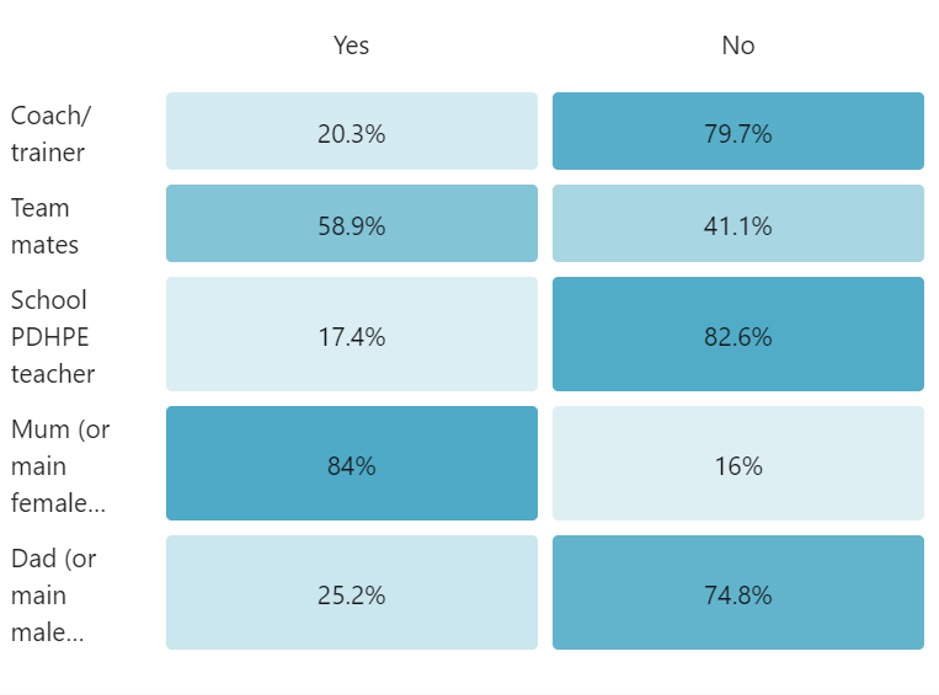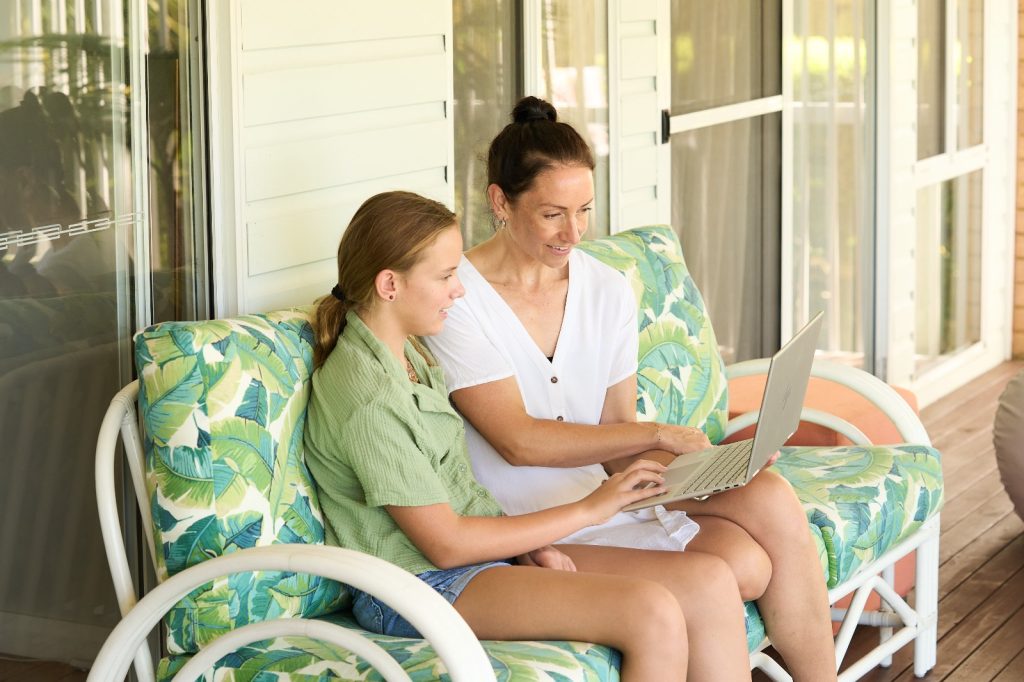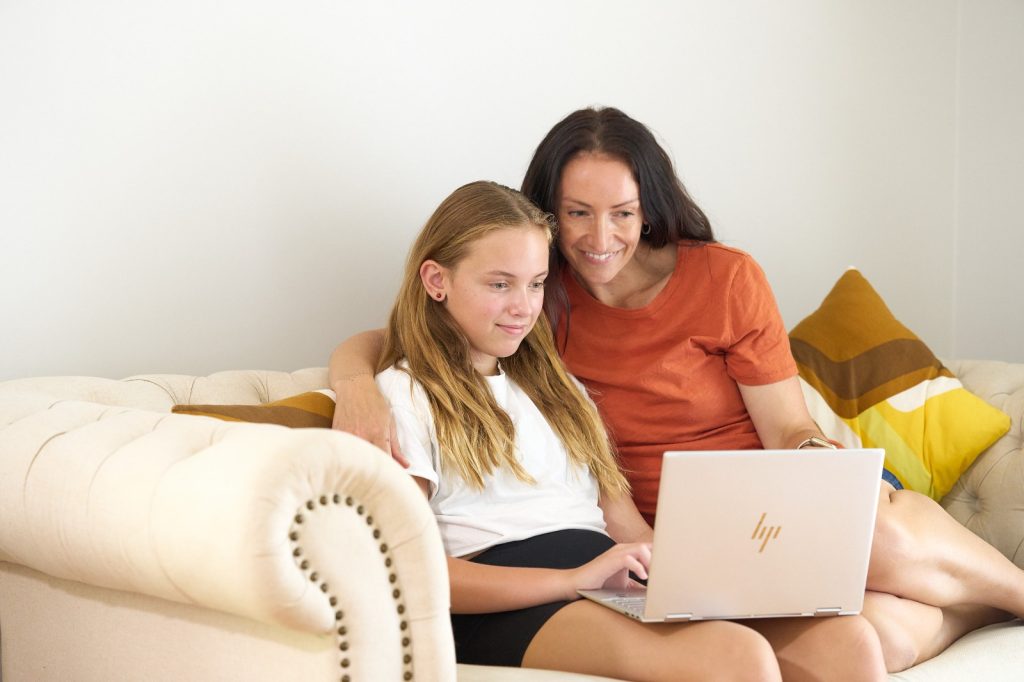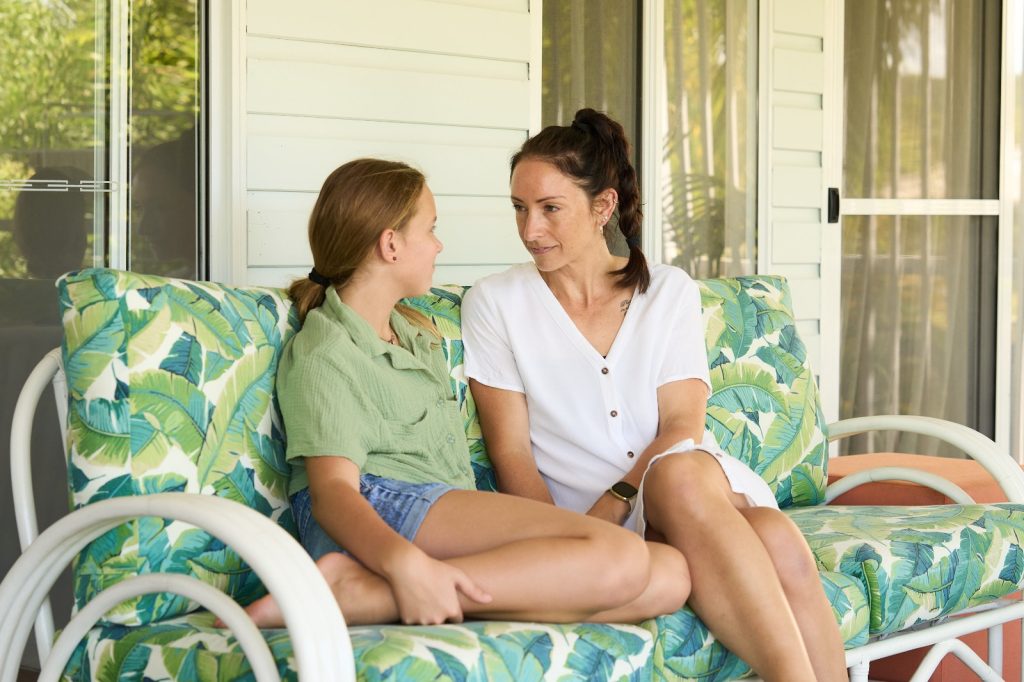Wednesday, March 22nd – A recent survey conducted by Eltee Sydney involving 2,302 tween and teen girls from across Australia highlights the significant impact puberty, specifically menstruation, has on girls’ participation in sports, with an alarming 63.9% reporting that they have quit or avoided sports or physical activity due to their tween period undies periods.

What we discovered should serve as a thundering call to action for parents, schools, clubs, and coaches alike to tackle the obstacles preventing potential-packed girls from excelling in sports from girlhood through their teens and into adulthood.
Which Sports Have Girls Avoided or Quit Due To Period-Related Challenges?
Our study sheds light on the high avoidance rates in sports that require participants to wear body-hugging or short uniforms. Among these, swimming tops the list with 67.6% (994 girls) admitting to skipping the sport during their period. Gymnastics, dancing, and netball follow suit with 35.1% (517 girls), 28.4% (418 girls), and 25% (368 girls) respectively. On the other hand, sports such as cricket, hockey, Aussie Rules, and tennis showed lower avoidance rates.

While one might be tempted to assume that higher participation rates are the main reason for avoidance of these activities, it is important to recognize that uniforms present an additional challenge for young girls entering puberty and experiencing menstruation.
Adolescence is a stage where many girls start developing feelings of insecurity around body image and heightened self-consciousness. Unsuitable uniforms can add to the overall feeling of insecurity and embarrassment.

Period-Related Challenges Affecting Girls’ Participation in Sports
The survey reveals a deeper understanding of the factors that contribute to young girls avoiding or discontinuing sports activities in relation to menstruation (see results below in Table 1).
One of the most prevalent reasons for this hindrance is cramping, which has been identified by an overwhelming 70.6% (or 1,039) of the surveyed girls. Menstrual cramps, scientifically known as dysmenorrhea, are caused by the contraction of the uterus to shed its lining. The resulting pain and discomfort can vary from mild to severe, but it has a significant impact on the girls’ willingness and ability to participate in physical activity.

Another key factor that contributes to the girls’ reluctance to engage in sports during menstruation is fatigue and tiredness, with 67.4% (or 991) of surveyed girls citing this as a discouraging element. This exhaustion results from the hormonal fluctuations experienced during the menstrual cycle, which can lead to a reduced level of energy and stamina. Consequently, girls may feel overwhelmed, both physically and emotionally, which acts as a deterrent to sports participation.
Leaks and Lows
Issues related to self-consciousness and knocked confidence rated highly on the ‘quit-o-meter’. Girls felt the following challenges had a strong impact on their reasons for quitting sports:
- 59.2% of girls admitted that “period dramas like leaks” were a major concern.
- 58.6% of girls attributed “feeling restricted and awkward because of period products” to their period-related woes.
- 57.4% asserted that they strongly feel like they are “unable to perform at their best” when they’re on their period.
And a staggering number of girls were freaked out by the potential bulkiness of wearing a pad and/or the prospect of inserting a tampon.

Above: Table 1
Which Products Are Girls Using to Manage Their Periods?
Among the 1,192 girls (81%) who stated they use the same product to manage their periods on a daily basis as well as during sports activities, disposable pads emerged as the preferred choice, with 49% (584) of them opting for this solution.
This finding is intriguing when paired with the participants’ sport-related period concerns. Ranking third, marginally behind fatigue in the list of sport-related period worries, was the fear of wearing a bulky pad or anything that might be noticeable to others, resonating with 64.6% (950) of the girls surveyed. This was followed by the ‘fear of leakage’ at 59.2% (871).
In comments from respondents (17 out of 528 total), we discovered that girls sometimes opt for the thinnest disposable pads to avoid embarrassing bulk, a decision which greatly increases the risk of leakage. This is frequently a result of their heavier menstrual flow not being adequately absorbed and managed by the pad’s smaller size.
Comments relating to using pads as period protection include:
- “Having to worry if I had bled through my bike pants and if anyone could hear or see my pad. I wear really thin ones, but they do leak if I don’t change every couple of hours.”
“Just very uncomfortable and very stressful. It’s easy to get paranoid when you’re on your period and you’re moving around a lot. Not worth the stress or the discomfort of certain products.”
“Bulky pads make being active very embarrassing.”
Period underwear followed closely, with 27% (328) of respondents relying on this alternative. For those who switched to different products when engaging in sports, tampons were preferred by 48.7% (136) of the participants, but they were only chosen as the protection of choice by 19.2% of girls for day-to-day activities and sports. The adoption of tampons could mitigate some of the worries girls face regarding bulk and pad shifting, resulting in leaks. However, the girls’ comments highlighted the need for more education on their use, as many girls expressed fear related to inserting tampons and had no idea how to use them, frequently saying variations of the following:
- “Tampons are scary.”
- “I didn’t know how to use a tampon.”
Other recurring comments indicated broader issues:
- “My mum didn’t let me use tampons, so I could not swim during my period.”
- “I’m too young to wear tampons.”
These findings highlight the importance of creating awareness and promoting the use of more discreet and comfortable period management options to encourage sustained participation in sports for young girls during their menstrual cycle.
Period underwear has undergone significant evolution to become a reliable and revolutionary alternative to traditional period products, offering unparalleled comfort and flexibility. They provide a reliable, comfortable alternative that can absorb up to 10-15ml of liquid—which is equivalent to bulkier heavy flow disposable pads—while also providing greater protection against leakage.
Championing Confident Girls, Fearless Athletes: Progress Through Empowering Environments
The study revealed that 79.7% (1,173) of the young girls surveyed would not feel comfortable addressing their period challenges with their coach (see Table 2), even though cramps and fatigue have been identified as primary factors leading to the discontinuation of their participation in sports. It is crucial to highlight that a simple dialogue and adaptation of their training schedules or programs could potentially resolve many of these issues; however, the lines of communication appear to be firmly closed.

Above: Table 2
Moreover, the survey found that young girls were the least likely to approach their sports or PDHPE teacher about this sensitive matter, with 82.6% (1,215) respondents indicating their unwillingness to do so. This unwillingness adds to the growing concerns about girls’ inability to seek counsel, negotiate flexibility, or find alternative period-management solutions within the sports domain.
Conversely, the survey showcased that mothers were the most trusted figures for girls to share their period-related challenges, with 84% (1,236) of respondents expressing ease in conversing openly with them about such obstacles during sports or physical activities. However, only 58.9% (867) of girls felt content in confiding with their teammates, leaving a significant 41.1% feeling uncomfortable discussing this topic even with their peers.
These findings underscore the urgent need for greater awareness and support networks surrounding menstruation and sport. Coaches, educators, and peers should be encouraged to foster open dialogues, break stigmas associated with menstruation, and share crucial insights to empower young girls to manage their period-related challenges effectively. By doing so, we may improve sports participation and eliminate the unnecessary barriers that currently hinder the potential of so many young female athletes.
Support An Inclusive Environment for All Active Girls
By fostering a society that values the well-being and success of girls in sports, we can significantly decrease dropout rates in girls’ sports participation and help them enjoy all the associated benefits, such as stronger relationships, better physical health, increased collaboration and team-building skills, self-esteem boosts, and more.
The insights derived from Eltee Sydney’s ‘Impact of Puberty on Girls’ Sport Participation Rates’ survey into the reasons girls avoid or quit sports due to menstruation are crucial, as they highlight the need to create a supportive environment that allows girls to continue participating in these activities while managing their menstrual symptoms.
Potential solutions may involve education around and greater access to non-bulky, leak-proof period management products like period underwear, educating coaches and peers about the effects of menstruation on young girls’ bodies and abilities, as well as considering issues around revealing uniforms at a time when girls can feel insecure about period management and their body image. Additionally, a greater emphasis on encouraging self-care and understanding, rather than pushing through physical pain or exhaustion, should be considered.
It is important to acknowledge that every girl’s experience of menstruation is unique, and no single solution will fit all. A tailored approach that respects and responds to each girl’s individual needs is crucial to ensure their continued engagement in sports and physical activity. By addressing these issues and creating a more inclusive and supportive environment within the realm of sports, young girls can be encouraged to maintain their interest in sports activities even during their menstrual cycle.

1 comment
Pokerdompaw
Dec 1, 2025
https://t.me/officials_pokerdom/3716